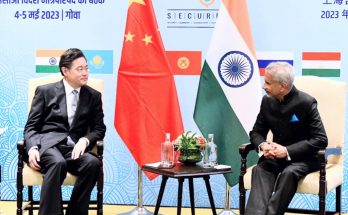 Taking a leaf out of science fiction, China, is planning to build a solar power station in space, an idea initially mooted by Isaac Asimov in his short story ‘Reason’ in which he mentioned a space station transmitting energy from the sun using microwave beams. Given its large population and high growth rates, China surpassed USA a few years ago to become the world’s largest energy consumer (though its per capita consumption still remains much less, 6.2 metric tonnes, while USA is about double that). Given its reliance on fossil fuel, however, pollution and strategic energy security (given a large percentage is imported) is a major concern (clearly indicated by the recent Beijing smog reports) and China has long searched for alternative energy sources. Today, China leads the world leader in harnessing wind and solar power and smart grid technologies.
Taking a leaf out of science fiction, China, is planning to build a solar power station in space, an idea initially mooted by Isaac Asimov in his short story ‘Reason’ in which he mentioned a space station transmitting energy from the sun using microwave beams. Given its large population and high growth rates, China surpassed USA a few years ago to become the world’s largest energy consumer (though its per capita consumption still remains much less, 6.2 metric tonnes, while USA is about double that). Given its reliance on fossil fuel, however, pollution and strategic energy security (given a large percentage is imported) is a major concern (clearly indicated by the recent Beijing smog reports) and China has long searched for alternative energy sources. Today, China leads the world leader in harnessing wind and solar power and smart grid technologies.
The new proposal is to install a huge solar power station, 36,000 kilometres over ground level. A space based solar panel shall be able to generate ten times more electricity as compared to that of a ground panel per unit area according to Duan Baoyan, a member of the Chinese Academy of Engineering. It would also be capable of battling smog, cutting GHG emissions, and providing a much needed round the year renewable energy source. Wang Xiji, an academician of the Chinese Academy of Sciences, says that “when space solar energy becomes our main energy, people will no longer worry about smog or the greenhouse effect”. He adds that an economically viable space power station would be huge, with the total area of the solar panels reaching 5 to 6 sq kms. This would make it equivalent to twelve Tiananmen Squares (the largest public square in the world) and people on earth would be able to see it in the night sky, like a star.
This latest development shows China’s commitment to harnessing renewable clean energies, which it made it the climate change deal last year with the USA, pledging to cap emissions latest by 2030 and increase use of energy from zero-emission sources to 20% by 2030. Solar based power stations, using a geosynchronous satellite fitted with solar panels has been in research but not found to be technically or financially viable till now. Extensive use of wireless technologies and new developments in the field seems to have made it a possibility in the future. Therefore though outlandish for now, it may actually become a reality soon.
Author Profile
- India Writes Network (www.indiawrites.org) is an emerging think tank and a media-publishing company focused on international affairs & the India Story. Centre for Global India Insights is the research arm of India Writes Network. To subscribe to India and the World, write to editor@indiawrites.org. A venture of TGII Media Private Limited, a leading media, publishing and consultancy company, IWN has carved a niche for balanced and exhaustive reporting and analysis of international affairs. Eminent personalities, politicians, diplomats, authors, strategy gurus and news-makers have contributed to India Writes Network, as also “India and the World,” a magazine focused on global affairs.
Latest entries
 DiplomacyApril 10, 2024Diplomat-author Lakshmi Puri pitches for women power at LSR
DiplomacyApril 10, 2024Diplomat-author Lakshmi Puri pitches for women power at LSR India and the WorldApril 6, 2024UN envoy pitches to take India’s solutions to the world stage
India and the WorldApril 6, 2024UN envoy pitches to take India’s solutions to the world stage CultureApril 5, 2024Youth in Diplomacy: Making it Matter with LSR Model UN 2024
CultureApril 5, 2024Youth in Diplomacy: Making it Matter with LSR Model UN 2024 India and the WorldMarch 28, 2024India to China: Normalization of troops deployment imperative for restoring ties
India and the WorldMarch 28, 2024India to China: Normalization of troops deployment imperative for restoring ties







